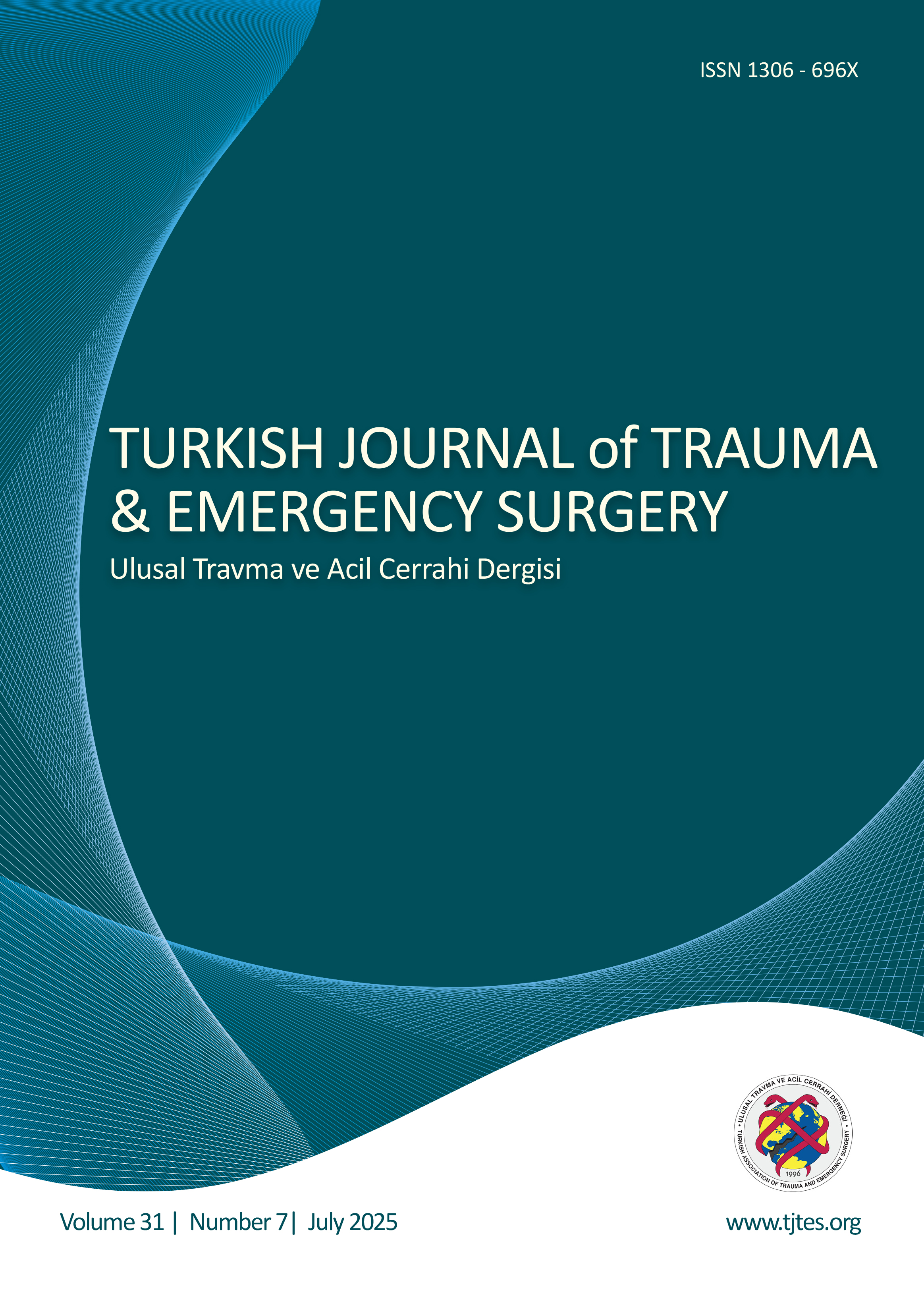Hızlı Arama
Hidatik kistlerin intraperitoneal rüptüründe cerrahi sonuçlar ve yönetim stratejileri: Retrospektif bir analiz
Bilal Turan1, Nurullah Bilen2, Emre Teke3, Serdar Acar1, İsa Karaca1, Sibel Yaman31Süleyman Demirel Üniversitesi, Tıp Fakültesi, Genel Cerrahi Ad, Isparta2Gaziantep Üniversitesi, Tıp Fakültesi, Genel Cerrahi Ad, Gaziantep
3Gaziantep Şehir Hastanesi, Genel Cerrahi Kliniği, Gaziantep
AMAÇ: Echinococcus türlerinin neden olduğu parazitik bir enfeksiyon olan hidatik kist hastalığı, genellikle karaciğer ve akciğerleri etkiler. Bu kistler, nadir de olsa spontan veya travmatik olarak periton boşluğuna rüptüre olabilir. Rüptür durumunda anafilaksi, safra kaçağı ve sekonder enfeksiyon gibi ciddi komplikasyonları önlemek için acil cerrahi müdahale gereklidir.
GEREÇ VE YÖNTEM: Bu retrospektif çalışmada, 2017-2022 yılları arasında genel cerrahi kliniğinde hidatik kist rüptürü nedeniyle tedavi edilen 13 hastanın verileri incelendi. Hastaların klinik semptomları, tanı yöntemleri, cerrahi yaklaşımları, postoperatif sonuçları ve takip süreçleri analiz edildi. Tüm hastalara acil cerrahi müdahale yapıldı; prosedürler arasında kist drenajı, skolisidal ajanlarla periton lavajı ve postoperatif albendazol tedavisi yer aldı.
BULGULAR: Çalışmaya 8 erkek ve 5 kadın hasta dahil edildi; hastaların yaş ortalaması 33 idi. Olguların 12sinde spontan rüptür, 1inde ise travmatik rüptür saptandı. En sık etkilenen organ karaciğerdi (%92.3). Cerrahi yöntem olarak 12 hastada parsiyel kistektomi ve omentopeksi uygulandı. Rekürrens oranı %8 olarak belirlendi. Postoperatif komplikasyonlar minimaldi; iki hastada görülen safra fistülü spontan olarak düzeldi, bir hastada ise yara enfeksiyonu gelişti. Ortalama hastanede kalış süresi 9.2 gün, takip süresi ise 18.8 ay olarak tespit edildi. Sirozu olan bir hasta portal hipertansiyona bağlı olarak kaybedildi.
SONUÇ: Hidatik kist rüptürü, özellikle endemik bölgelerde nadir fakat hayatı tehdit eden bir durumdur. Morbidite, mortalite ve rekürrensi azaltmak için acil cerrahi müdahale ve postoperatif albendazol tedavisi şarttır. İntraperitoneal rüptür geçiren hastalarda hidatidozun potansiyel komplikasyonlarını yönetmek için ömür boyu takip önerilmektedir.
Surgical outcomes and management strategies in intraperitoneal rupture of hydatid cysts: A retrospective analysis
Bilal Turan1, Nurullah Bilen2, Emre Teke3, Serdar Acar1, İsa Karaca1, Sibel Yaman31Department of General Surgery, Suleyman Demirel University, Faculty of Medicine, Isparta-Türkiye2Department of General Surgery, Gaziantep University, Faculty of Medicine, Gaziantep-Türkiye
3Gaziantep City Hospital, General Surgery Clinic, Gaziantep-Türkiye
BACKGROUND: Hydatid cyst disease, a parasitic infection caused by Echinococcus species, primarily affects the liver and lungs, with potential for spontaneous or traumatic rupture into the peritoneal cavity. Although hydatid cyst perforation is rare, it necessitates urgent surgical intervention to prevent severe complications such as anaphylaxis, bile leakage, and secondary infection.
METHODS: This retrospective study analyzed 13 patients with hydatid cyst perforation who were treated in a general surgery clinic between 2017 and 2022. Data regarding clinical presentation, diagnostic methods, surgical approaches, postoperative outcomes, and follow-up were reviewed. All patients underwent emergency surgery involving cyst evacuation, peritoneal lavage with scolicidal agents, and postoperative albendazole therapy.
RESULTS: The cohort included eight male and five female patients, with a mean age of 33 years. Spontaneous perforation occurred in 12 cases, and one case was due to trauma. The liver was the most commonly affected organ (92.3%). Surgical interventions consisted of partial cystectomy with omentopexy in 12 patients. The recurrence rate was 8%. Postoperative complications were minimal, including two bile fistulas that resolved spontaneously and one case of wound infection. The average hospital stay was 9.2 days, and the mean follow-up duration was 18.8 months. One patient with cirrhosis died due to complications from portal hypertension.
CONCLUSION: Hydatid cyst rupture is a rare but potentially life-threatening condition, particularly in endemic regions. Prompt surgical intervention, combined with postoperative albendazole therapy, is essential to reduce morbidity, mortality, and recurrence. Lifelong monitoring is recommended for patients with intraperitoneal perforations to manage potential complications of hydatidosis.
Makale Dili: İngilizce




